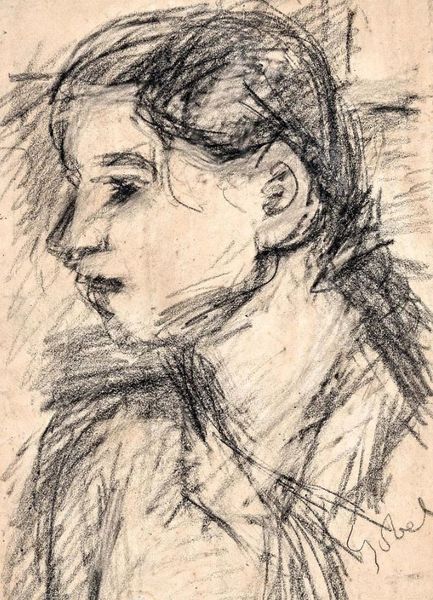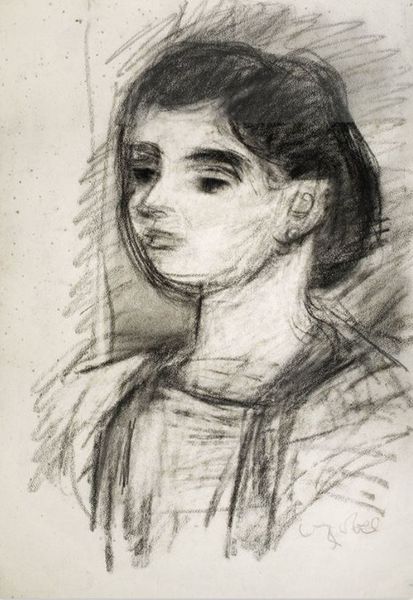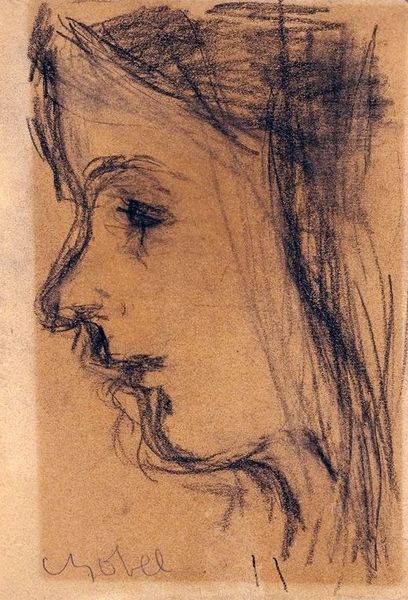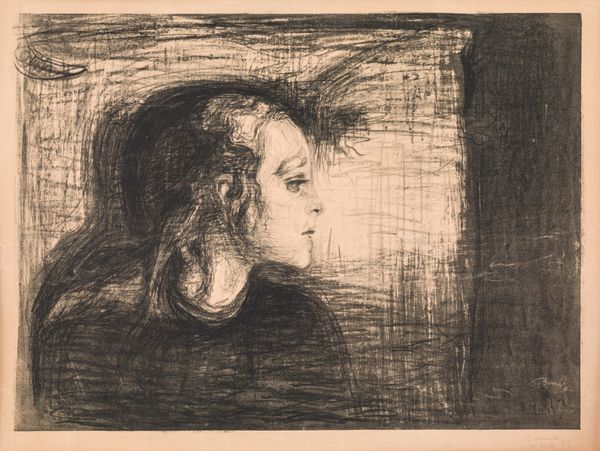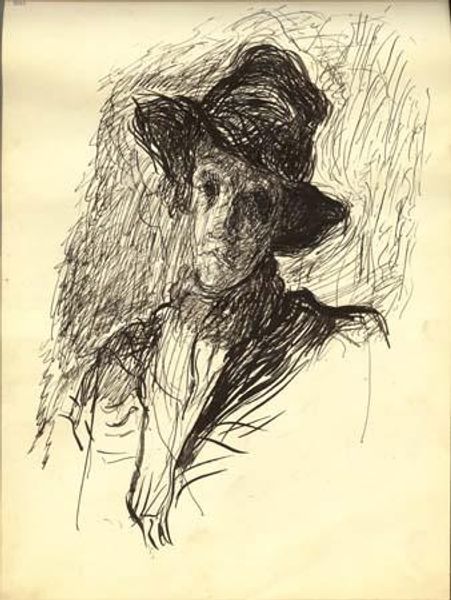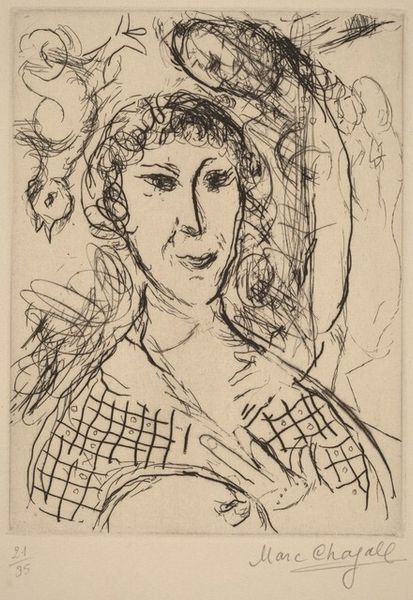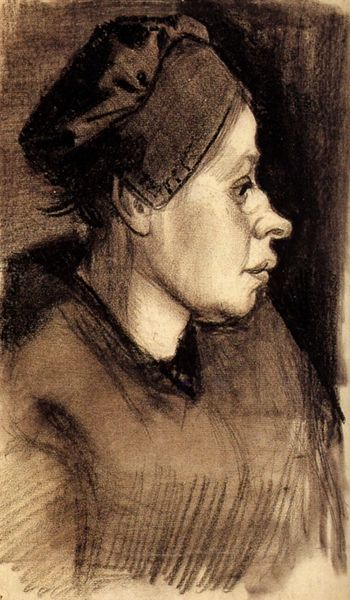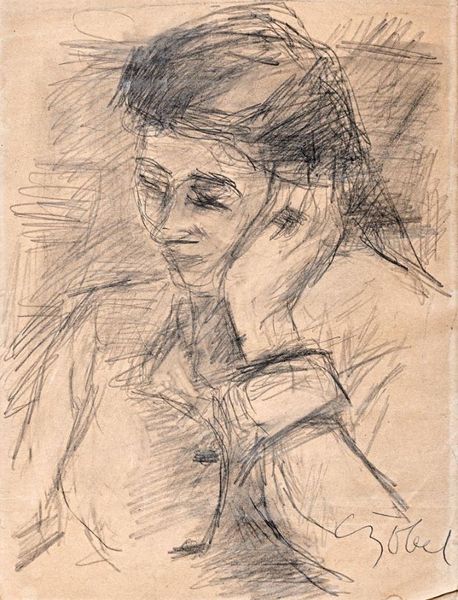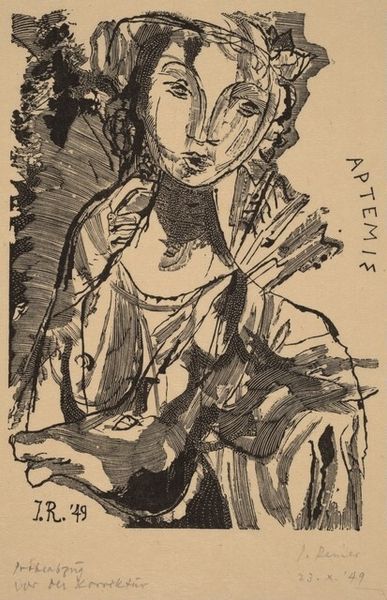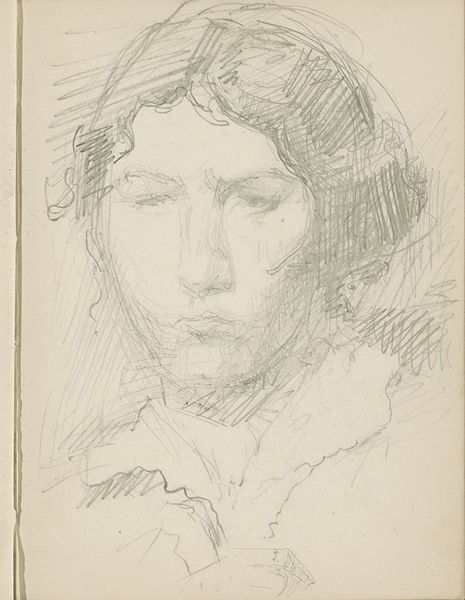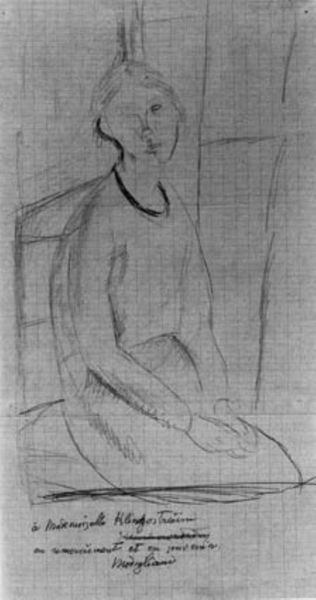
Copyright: Pablo Picasso,Fair Use
Curator: This sketch just vibrates, doesn't it? Like a plucked string holding a single note. Editor: Indeed. We are looking at Pablo Picasso’s “Portrait of Sylvette David,” completed in 1954. It's rendered with pencil, a flurry of lines capturing the sitter. You can almost feel the quickness of his hand. Curator: Quickness, yes, but also a sort of deliberate chaos. It's like he’s trying to catch her soul in a net made of graphite. Her gaze is so direct, almost melancholy. Yet the lines dance all around her. Editor: It's interesting you mention the 'net,' because Picasso was quite captivated by Sylvette. The image proliferated; she became a sort of "it girl" of the time, embodying a youthful, modern spirit. The series itself speaks volumes about art’s power to elevate an individual. Curator: She became the face of his obsession! There's this controlled frenzy about it. It's like he's trying to distill an essence, but the sheer number of lines suggests he never quite felt he got there, that something always eluded him. That is human, right? That search. Editor: Absolutely, the piece stands as an artifact, encapsulating his period during which the art world grappled with the implications of representation post World War II. This piece invites a meditation on the role of an artist in shaping an individual’s cultural identity, a potent social dynamic that museums explore through curation and exhibition. Curator: It's so interesting how what starts as an intimate portrait evolves into this social statement. A simple sketch ripples outwards, echoing beyond its initial intent. So what is it all about I ask you? Editor: Art constantly exceeds what anyone, the sitter or the painter, can truly know. The dialogue always pushes into different conversations. That seems very much present in this piece, in this fleeting encounter.
Comments
No comments
Be the first to comment and join the conversation on the ultimate creative platform.
